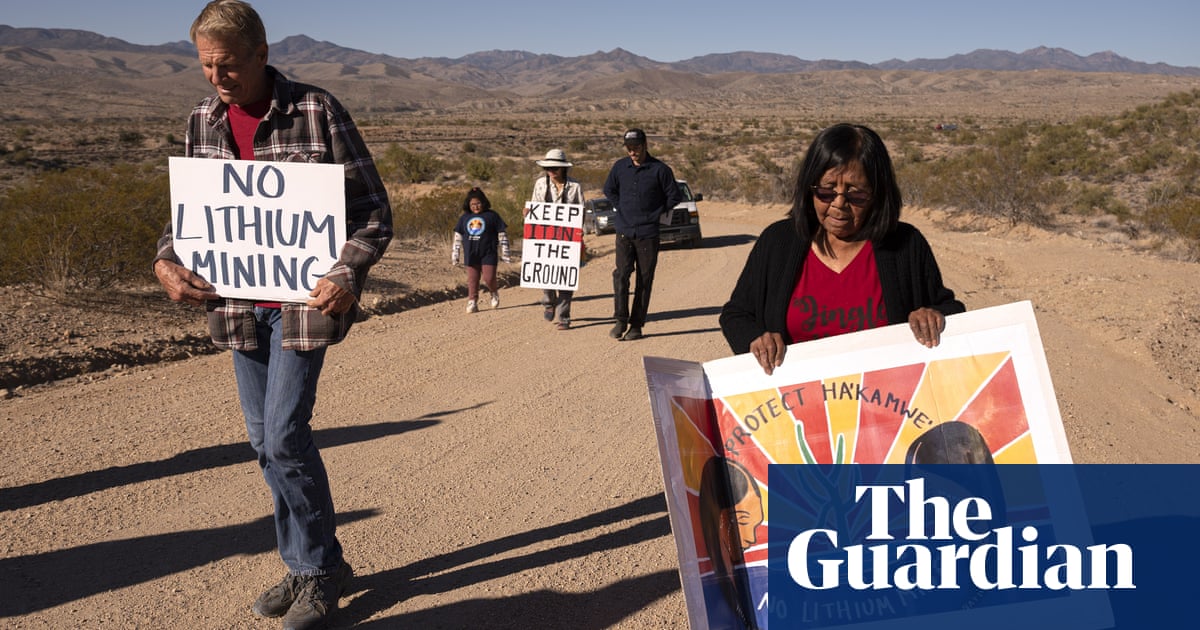Located in Wikieup, Arizona, at the meeting point of the Mojave and Sonoran deserts, H’a’Kamwe’ has for centuries had sacred significance for the Hualapai tribe. They regard the hot spring, fed by water naturally stored underground in volcanic rocks, as a place for healing that symbolises their connection to the land.
So when an Australian mining company announced plans to begin exploratory drilling for lithium at 100 locations on Hualapai land, including as close as just 700 metres from H’a’Kamwe’, they regarded it as a potential desecration.
In August last year, the Hualapai filed a lawsuit before the Arizona district court against the US Bureau of Land Management, alleging it violated the National Historic Preservation Act and the National Environmental Policy Act by failing to properly assess the impact.
Their case is just one of an accelerating wave of legal actions against renewable energy and critical minerals projects that is raising concerns that the green transition is leading to human rights and environmental abuses.
Renewable electricity generation must triple by 2030, with 85% of that increase coming from critical mineral-hungry wind and solar power projects, if the world is to avoid catastrophic climate breakdown.
But a scheme that tracks lawsuits against projects to build renewable energy plants or mine for the minerals they rely on has tracked 95 challenges since 2008, with more than three-quarters filed – like the Hualapai’s – in the past seven years alone.
The Business & Human Rights Resource Centre’s (BHRRC) just transition litigation tracking tool found 71% of lawsuits in its dataset were linked to the mining of bauxite, cobalt, copper, lithium, manganese, nickel, zinc and iron ore – minerals BHRRC says are key to the green energy transition. The remainder targeted the renewable energy sector, 14% relating to wind, 12% linked to hydro, and 4% regarding solar.
According to a report inAZCentral, the Hualapai claim included concerns that noise, vibrations and industrial machinery would ruin a site used for prayer. But their bigger concerns were environmental, including fears that drilling could puncture the aquifer that feeds H’a’Kamwe’.
In that, their case was not unusual, according to BHRRC, which found that 70% of legal cases in its tracker related to the right to a clean, healthy and sustainable environment, and 56% relating to water pollution or access to water.
Almost half the claims were filed by Indigenous people. Of these, 49% were linked to violations of Indigenous peoples’ rights, including violation of the right to free, prior and informed consent in 33% of cases.
Elodie Aba, a senior legal researcher at BHRRC who carried out the analysis, warned that the essential transition to cleaner energy resources could not come at the expense of people on the frontlines of resource extraction.
She said: “Lawsuits, which are often a last resort, have become a powerful tool for those left out of the decision-making process. These lawsuits are not a rejection of climate action; they are a demand for a just transition.”
For the Hualapai, the law has worked – for now. Last November, a federal judge extended a temporary pause on drilling on their lands, at least for the duration of their case. The outcome has yet to be determined.
